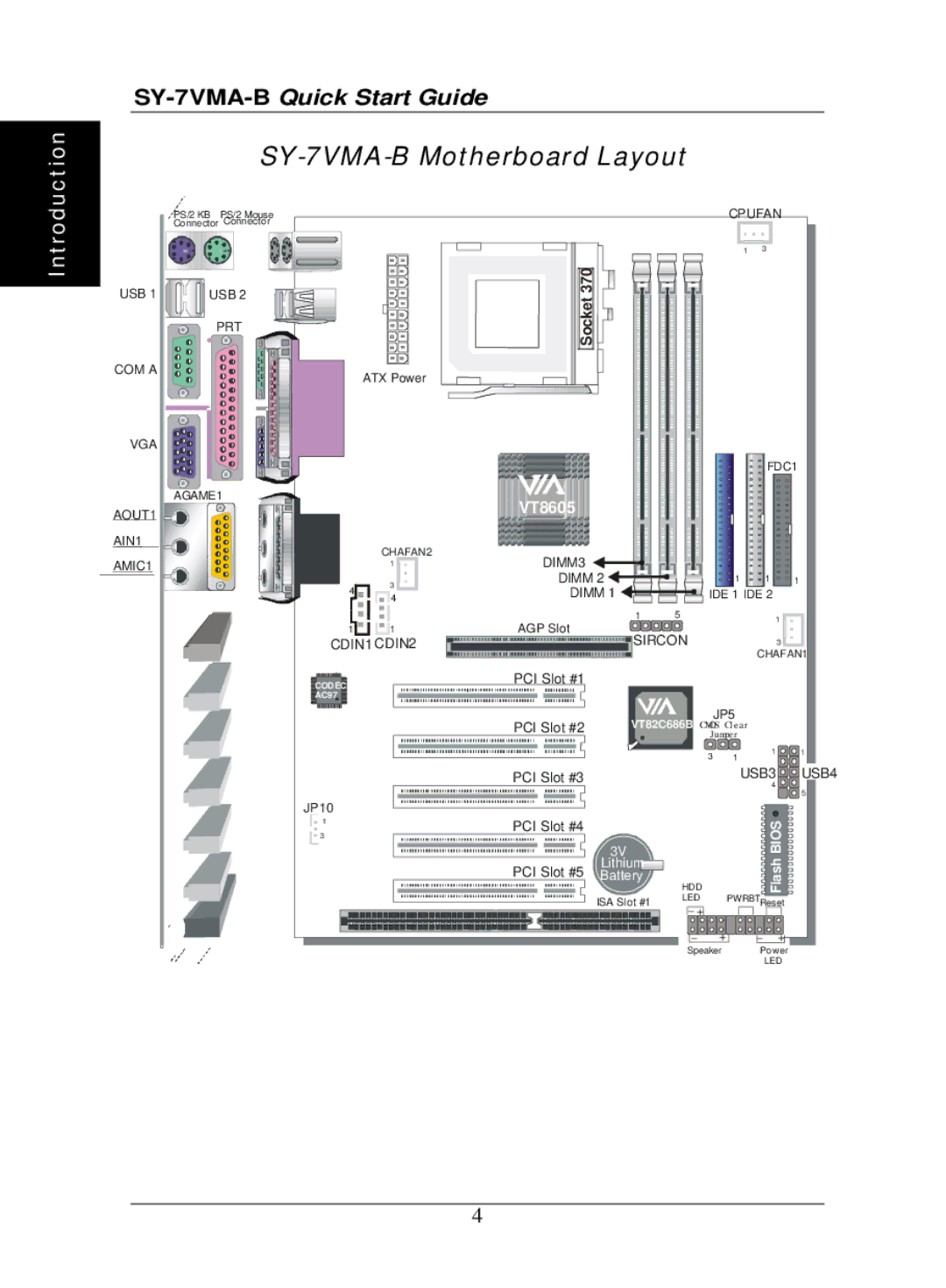SY-7VMA-B specifications
The SOYO SY-7VMA-B is a highly regarded motherboard that became popular in the early 2000s, particularly among enthusiasts who sought reliable performance and flexibility for their computers. Built to support Socket 370 processors, this motherboard is compatible with Intel Celeron and Pentium III CPUs, making it a versatile choice for users looking to upgrade or build their systems.One of the main features of the SOYO SY-7VMA-B is its ability to handle a maximum of 1GB of SDRAM, utilizing two DIMM slots. This allows for sufficient memory capacity for various applications, from basic computing tasks to more demanding workloads. The motherboard also supports memory speeds of up to 133 MHz, ensuring snappy performance in a wide range of scenarios.
The SY-7VMA-B is equipped with the VIA Apollo Pro 133 chipset, which enhances its functionality and performance. This chipset is known for its stability and efficient power management, making it a reliable choice for users seeking a balance between performance and energy consumption. The AGP slot available on the motherboard allows users to install dedicated graphics cards, enabling better graphics performance for gaming and graphic-intensive applications, which was a primary concern for users during that era.
Another notable characteristic is the inclusion of built-in audio support through the AC'97 audio codec. This means users do not need to invest in a separate audio card, making the SY-7VMA-B an economical option for those looking to build a cost-effective system without compromising on multimedia capabilities.
The motherboard also features a range of integrated I/O ports, including USB 1.1 and PS/2 connectors for keyboards and mice. With support for both IDE drives and floppy disks, it offers flexibility in storage options. The built-in BIOS also supports settings adjustments, which are critical for users wanting to optimize their system's performance.
In summary, the SOYO SY-7VMA-B is characterized by its robust support for Socket 370 processors, ample memory capacity, and solid performance offered by the VIA Apollo Pro 133 chipset. With integrated audio capabilities and a variety of I/O options, it serves as an excellent foundation for building a reliable computer system, especially during a time when users demanded both performance and cost-effectiveness. Its legacy continues to be appreciated by retro computing enthusiasts and those who value the history of motherboard technology.

